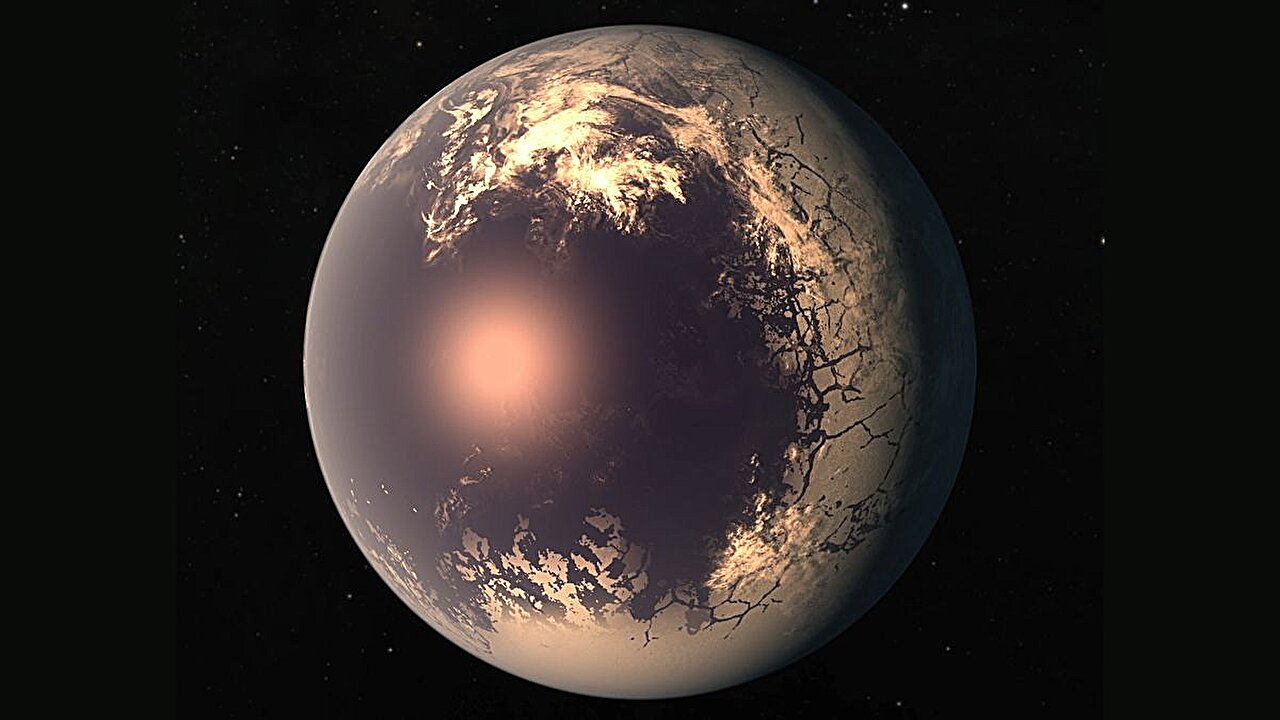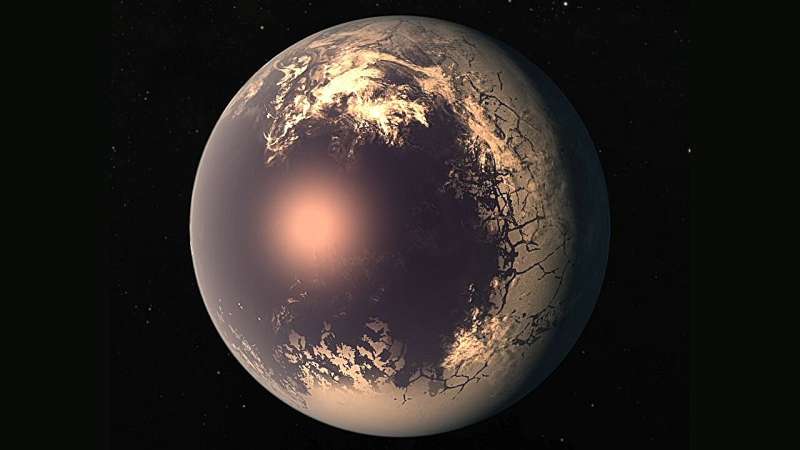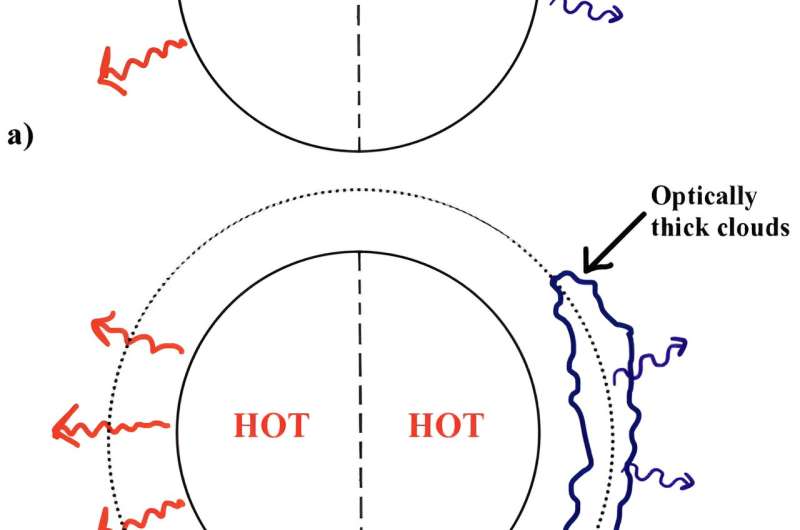

Most of the exoplanets we’ve discovered orbit red dwarf stars. This isn’t because red dwarfs are somehow special, simply that they are common. About 75% of the stars in the Milky Way are red dwarfs, so you would expect red dwarf planets to be the most abundant. This also means that most habitable worlds are going to orbit these small, cool stars, and that has some significant consequences for our search for life.
To begin with, any potentially habitable red dwarf world will need to orbit its star closely, just to be warm enough for things like liquid water. The TRAPPIST-1 system I talked about yesterday is a good example of this. The three potentially habitable planets of the system orbit at a small fraction of the distance between Mercury and the Sun. This means they are at risk of things such as stellar flares, but it also means they are almost certainly tidally locked.
Tidal locking occurs when a planet or moon is so close to its companion that tidal forces cause its rotation to sync with its orbital motion. When a planet is tidally locked, one side always faces its star while the other side is forever in darkness.
As you might imagine, this would mean the warm side fries while the other freezes. That’s true unless the planet were to have a good atmosphere. With a water-rich, Earth-like atmosphere, heat could move between the day and night sides. Weather would be strange on such a world, but a tidally locked world could be habitable, with fairly even day-side and night-side temperatures.

Observing the atmospheres of tidally locked planets is difficult, but astronomers have a trick to see whether an atmosphere exists. Rather than trying to capture an atmospheric spectra, they can simply measure the surface temperature of the planet on opposite sides.
So, look at the star as the planet moves in front of it to determine the temperature of the dark side, and look at it again as the planet moves behind the star to get the light side temperature. If the dark and light sides have dramatically different temperatures, then it must not have an atmosphere. Easy-peasy. But a new study shows that isn’t necessarily true.
The paper is published on the arXiv preprint server.
In this paper the authors argue that clouds on the dark side of a world could skew our data. To show this, they considered a tidally locked world with a thick atmosphere. Based on their models, the atmosphere would moderate global temperatures on the planet so that the day side is only a few dozen degrees warmer than the dark side. This is similar to the day and night extremes of a dry region on Earth. While moderate, the temperature shift would be enough to trigger the formation of thick clouds on the dark side.
In this scenario, the day side would be mostly cloudless and we would measure the warm temperature of the planet’s surface. But with a cloudy dark side, we would measure the temperature of the upper layer of clouds, which would be much colder. So, even though surface temperatures of the planet are fairly uniform, it would appear to have an extreme temperature shift like an airless world. The authors go on to look at how observations from the JWST could distinguish between cloudy planets and those without an atmosphere, but it is clear that one simple trick in the search for habitable planets isn’t quite so simple.
More information:
Diana Powell et al, Nightside Clouds on Tidally-locked Terrestrial Planets Mimic Atmosphere-Free Scenarios, arXiv (2024). DOI: 10.48550/arxiv.2409.07542
Journal information:
arXiv
Provided by
Universe Today
Citation:
Exoplanets could be hiding their atmospheres (2024, September 20)
retrieved 20 September 2024
from https://phys.org/news/2024-09-exoplanets-atmospheres.html
This document is subject to copyright. Apart from any fair dealing for the purpose of private study or research, no
part may be reproduced without the written permission. The content is provided for information purposes only.